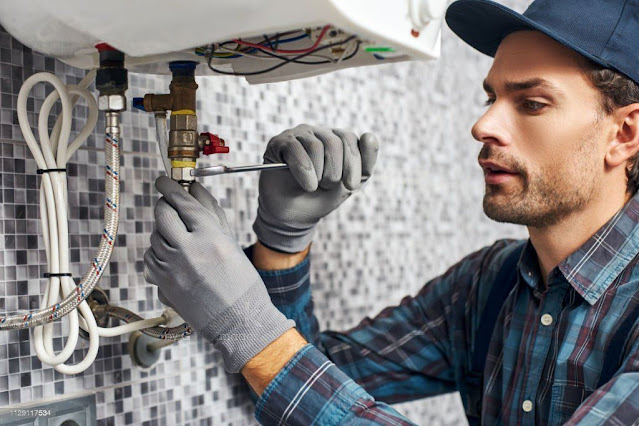Assess Your Needs
Before tackling any plumbing projects, inspect your existing system and take stock of known issues. Check for signs of corrosion, leaks, low water pressure, or drainage problems. These clues can help determine where upgrades and repairs are needed most. Concentrate first on urgent issues affecting water supply, drainage and sewer lines. While updating old fixtures can improve aesthetics, addressing functional problems should take priority.
Repair Select Sections of Piping
Instead of completely replumbing your whole house, consider re-piping only problem portions or those nearing the end of usefulness. Galvanised steel pipes have a lifespan of about 50 years before the buildup of rust and scale impacts water flow. Check these aging pipes first. Repiping select sections or runs using copper and PEX is often more affordable than redoing all plumbing. A combination of PEX for its flexibility and copper for longevity works well. If you are uncomfortable or inexperienced with making plumbing repairs yourself, consult a licensed plumber in Brighton to handle tricky pipe replacements or installations.
Install New Water Supply Lines
For improving water flow to fixtures and appliances while avoiding re-piping costs, install new water supply lines from galvanised steel or brass to flexible braided stainless steel. Consider lead-free polyethylene tubing or PEX lines as the endpoint segments. This allows easier installation around existing plumbing without the major demolition re-piping requires. Completely remove old water supply lines with corrosion or scale buildup for best results.
Seal Pipe Leaks and Micro Cracks
Tracking down leaks throughout an aging plumbing system and sealing them makes a bigger impact than you realise. Even small, slow drips add up over months and years, leading to higher water bills, moisture issues, and potential mold problems. Seal stubborn micro cracks and leaks using epoxy sealants formulated for plumbing. Both quick-setting putties or methacrylate spray-on sealants work to stop leaks at joints in non-pressurised drain pipes. Quick fixes today prevent big headaches down the road.
Insulate Exposed Water Lines
Installing foam pipe insulation around existing exposed water supply lines and drains doesn’t directly upgrade old plumbing. But preventing heat loss keeps hot water flowing briskly while preventing sweating and moisture on cold water pipes. Retaining heat in hot water lines reduces wait times, saves energy dollars and limits heat stealing condensation - all for minimal investment in foam insulation. Sealing air leaks around plumbing at the same time optimises heat benefits.
Replace Key Fixtures and Appliances
Big ticket plumbing items like faucets, shower valves, toilets and water heaters have a functional lifespan ranging from about 10- 20 years. As these fixtures age, replacement parts become difficult to find. Instead of repairing old plumbing fixtures again and again, replace critical components with functional new versions. WaterSense labeled models offer water and energy efficiency the old items lack. Installing some new fixtures freshens up appearances too without a full bath or kitchen remodel.
Update Drain Lines Incrementally
Replacing worn-out supply piping a little at a time, updating old drain lines incrementally makes both functional and budgetary sense. Start by using a camera scope to inspect the interior condition of existing waste lines. Identify sections with obstructions, root infiltration or extreme corrosion. Dig up problem portions and replace those drain line segments only. Use quality ABS plastic or PVC piping to link the old with new, while leaving remaining functional drain piping underground. For complicated jobs like this, make room in your budget to call a professional plumber in Brighton to ensure proper positioning and connections.
Adjust Temperature Settings
To save money on energy bills and reduce risks from unsafe hot water levels, adjust the settings on your water heater. Hot water heaters often come from the factory with high default temperatures around 140°F at the outlet. Adjust down to a maximum of 120°F. For even better savings and safety, dial water heaters down to 100 - 110°F. Doing so reduces risks of scalding accidents while cutting energy costs. Bleed air from the tank afterward so heating cycles run efficiently using less energy on reheating.
Improve Water Pressure
For noticeable everyday improvements without major plumbing overhauls, install a pressure-boosting pump if your home struggles with low flow levels. Connect the booster pump device near the main water supply entry point. Use the pressure switch adjustments to bring your home’s water pressure up to the recommended range of 45 - 80 psi. Once activated, the system automatically maintains this preset operating pressure. Enjoy better flow and pressure all through the house for showering, cleaning, and using sinks and toilets.
Updating old plumbing doesn’t have to mean tearing up walls or breaking the bank. An experienced plumber, like Doyle Plumbing Group, can identify signs of trouble in your home's plumbing and recommend the most urgent fixes needed. In an older home, combining incremental upgrades with strategic repairs and replacements goes a long way. Use this mix-and-match approach to improve pipe function, water flow, energy efficiency and fixture performance - all on a DIY homeowner’s budget.
